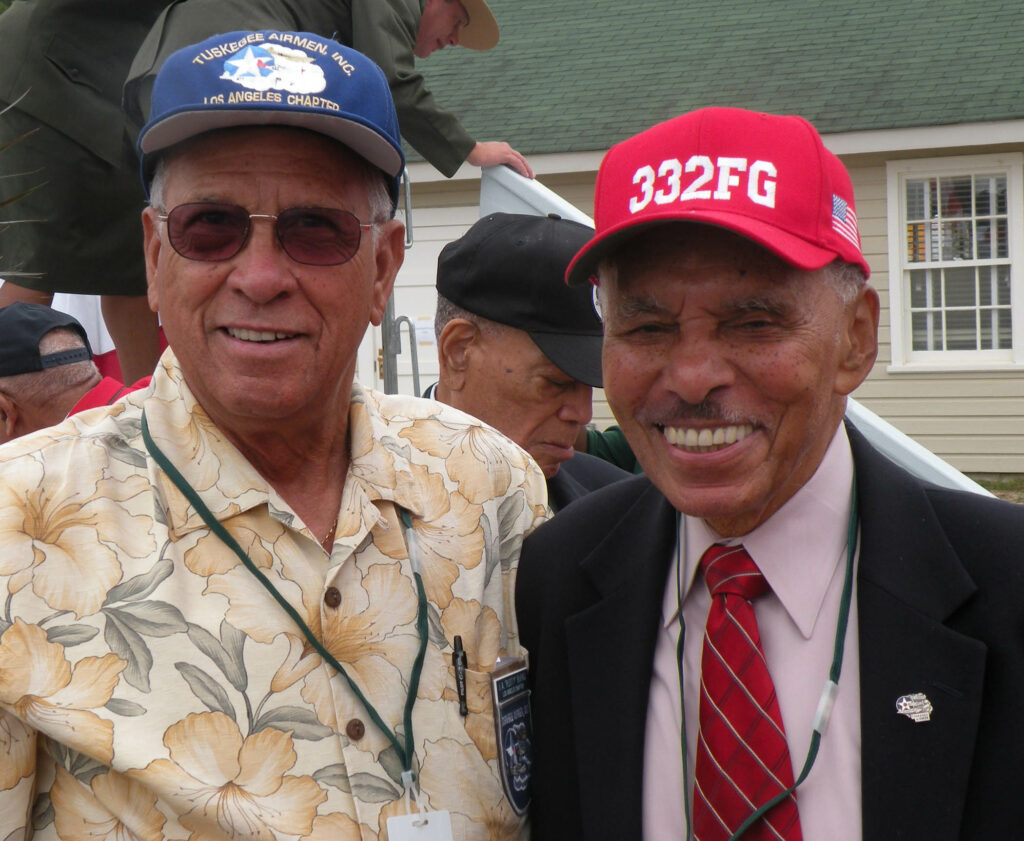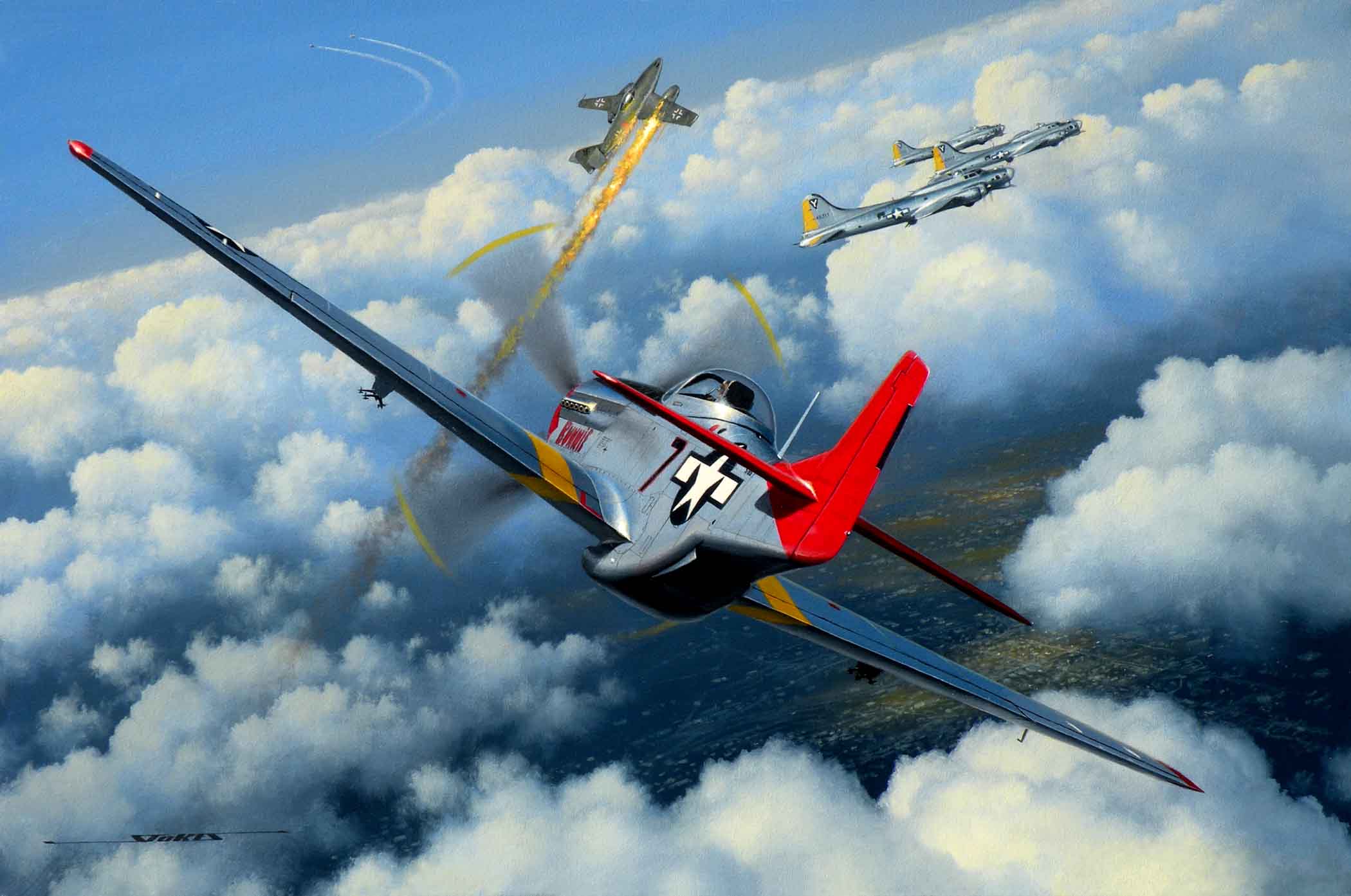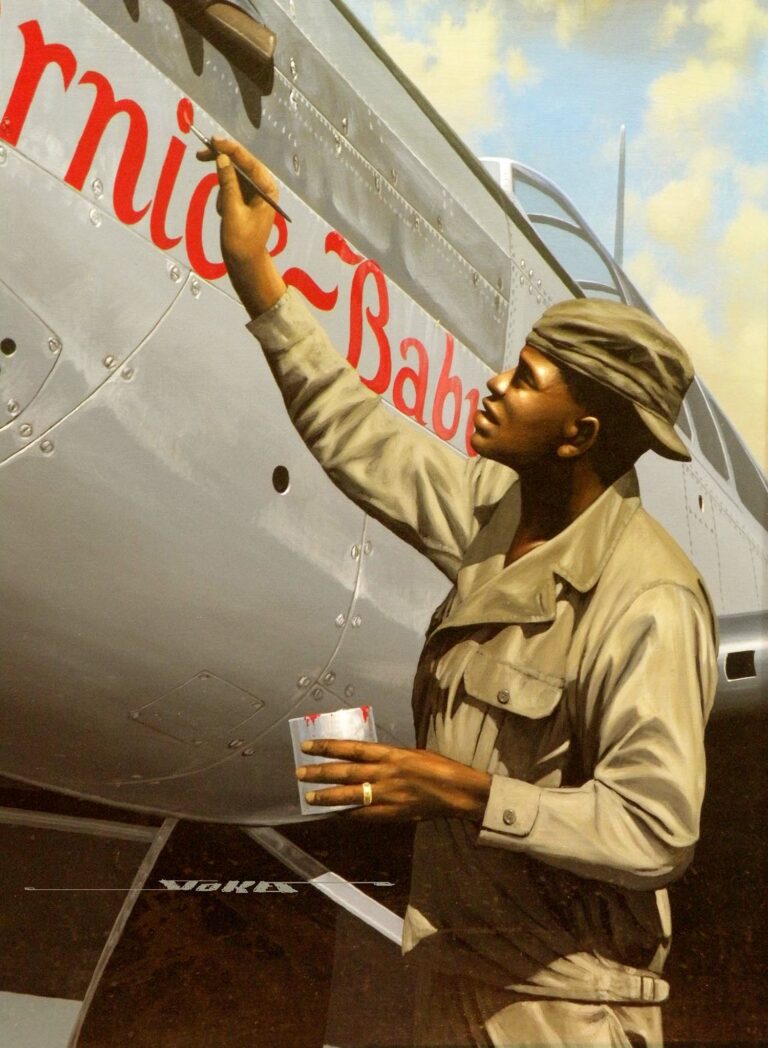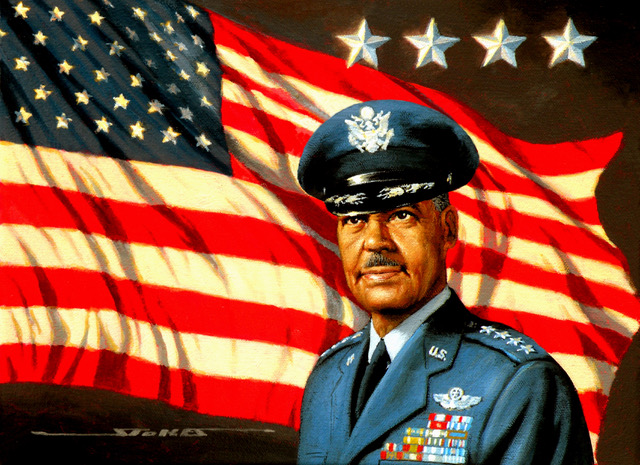The Messerschmitt 262 Jet Kill
On March 24, 1945, the Tuskegee Airmen flew their longest mission of the war, escorting heavy bombers to Berlin (which was farther from their base in Italy than from American airfields in England). Over the German capital, they encountered Messerschmitt Me 262 jets.
To confront the bombers and fighters, the Luftwaffe had launched 30 Me 262s from Brandenburg Briest near Berlin. The Me 262s were 100 mph faster than the American P-51s. This gave the P-51s a great disadvantage in the air battles with the jets.
Capt. Brown stated in his mission report, “as we got over the outskirts of Berlin, I first saw these streaks, which I knew were jets…And they were coming up to attack the bombers.” I ordered the other P-51 pilots, “drop your tanks and follow me”.
Capt. Brown spotted one jet climbing toward the bombers. He had to do something fast.
“He didn’t see me,” Capt. Brown said. “And then I turned into his blind spot, put on my electronic gun sight, and there he was.
“I pulled up at him in a fifteen-degree climb and fired three long bursts at him from 2,000 feet at eight o’clock to him. Almost immediately, the pilot bailed out from about 24,500 feet. I saw flames burst from the jet engines of the enemy’s aircraft. The attack on the bombers was ineffective because of the prompt action of my flight in breaking up the attack.”
The pilot of the 262 was ten-kill air ace Oberleutnant Franz Kulp. During his bail-out, Kulp sustained severe wounds but survived.

Rusty Burns and Roscoe Brown, October 2008, at Moton Field, Tuskegee Alabama.




